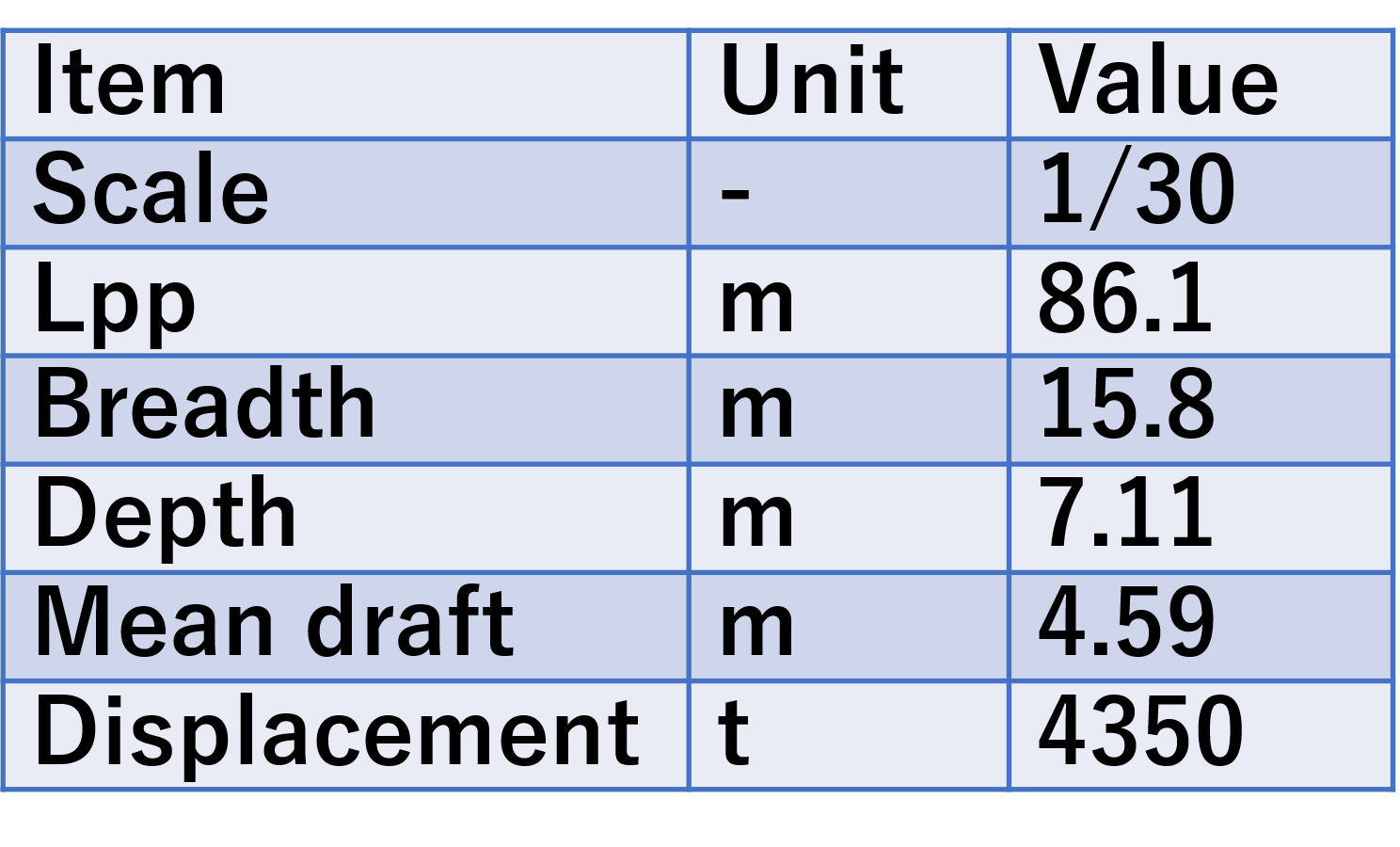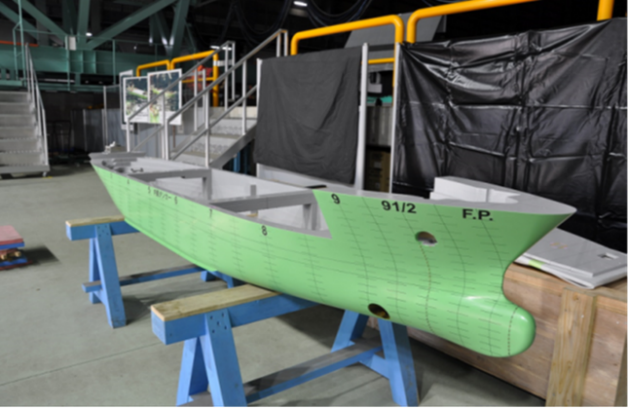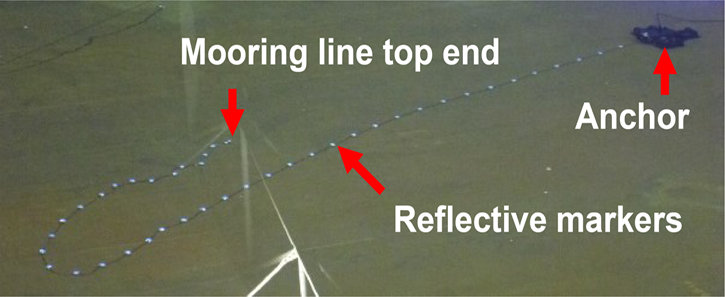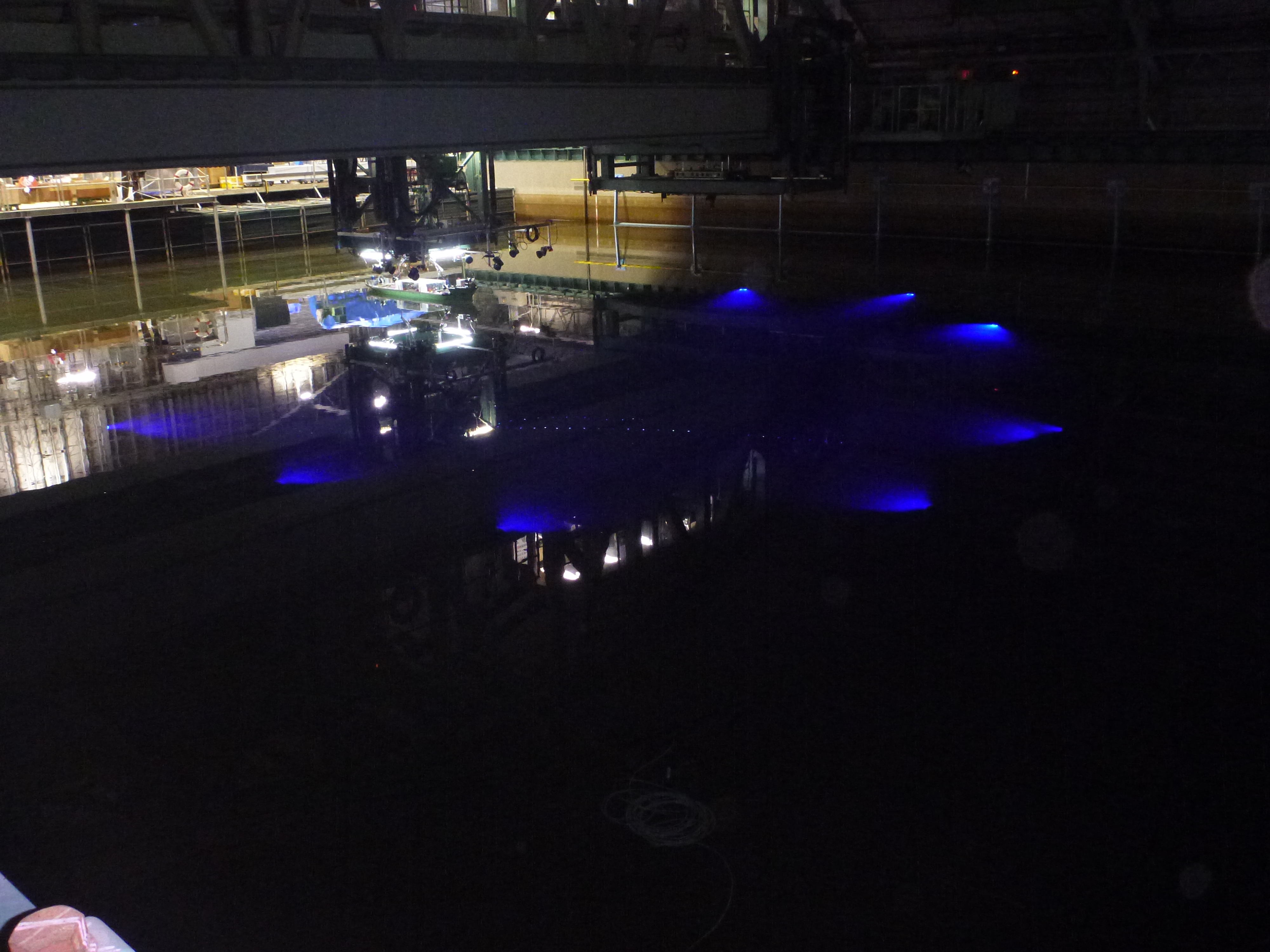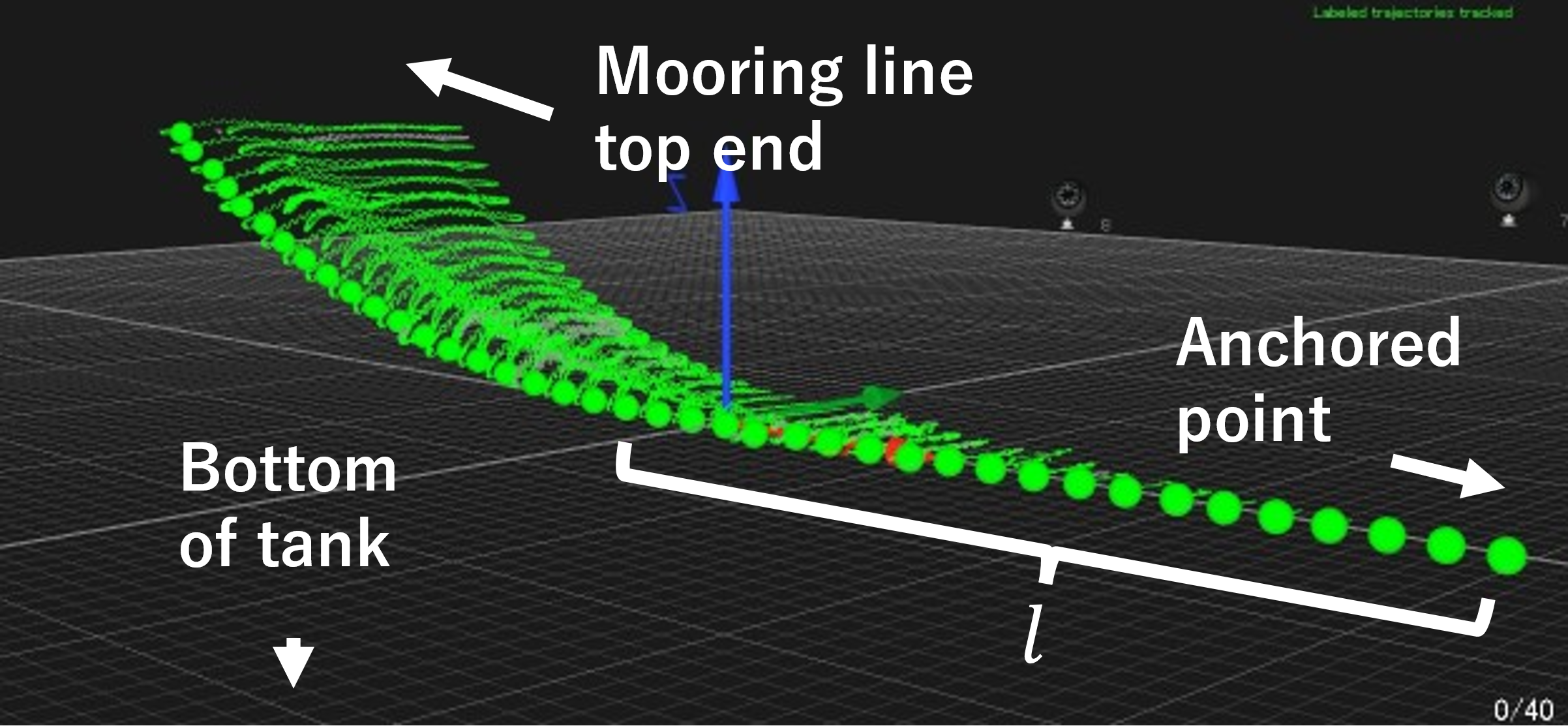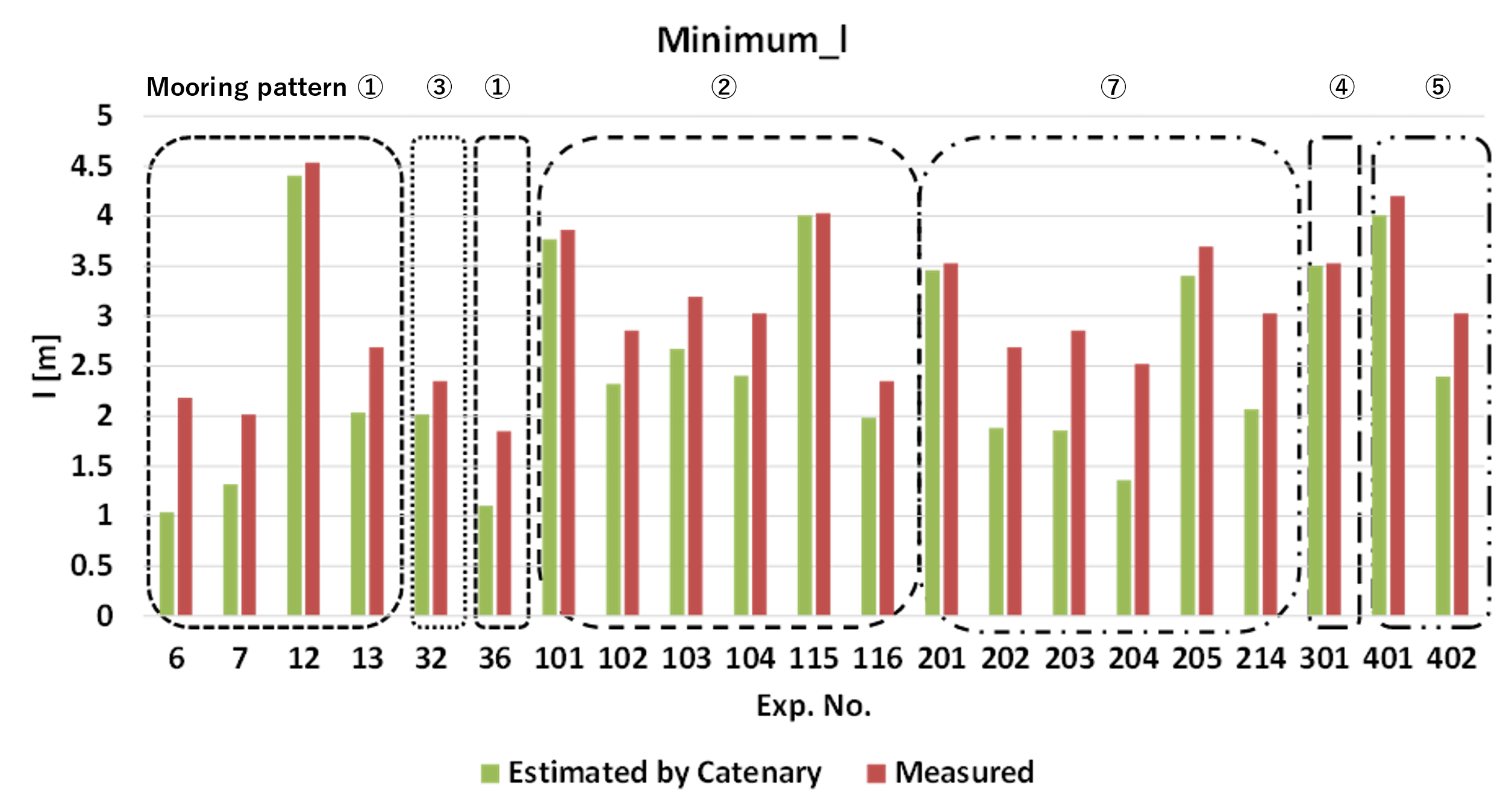Study on evaluation of underwater behavior of anchor chain of a ship in slewing motion
Research Overview
Research Overview
In recent years, the damage caused by typhoons approaching and making landfall around Japan while maintaining strong intensity has increased. Ships anchored in rough seas face the risk of grounding and collision with other ships or structures due to the phenomenon of dragging anchor, in which waves and wind drift off the anchored vessel.
Dragging anchors occur more frequently when the holding force keeping the ship at its anchorage point falls below the environmental forces. The holding force is the sum of the anchor holding power and the frictional force of the chain on the seabed. This study focuses on the dragging anchor of anchored vessels. It aims to validate a method for estimating the chain's length on the seabed to assess the holding force during the slewing motion, which occurs in the initial stages of the dragging anchor process.
The horizontal component of the chain's top-end tension and the catenary theory were used to assess the holding force. In addition, a model test was carried out using a scale model of a coastal tanker attached to a scaled anchor chain to validate our holding force assessment. In the Ocean Engineering Basin, underwater motion capture cameras were installed on the basin bottom to measure the behavior of the chains, which had reflective markers attached. Various anchoring conditions, including single and two anchors, were also reproduced.
The Offshore Engineering System Research Group is advancing research on developing models to evaluate and estimate the behavior of such underwater linear structures 1), 2).
Ship under study and basic specifications
Tank Tests
Reflective markers were attached to the anchor chain model, and their three-dimensional positions were measured by capturing the reflected light from blue LED lights using underwater motion capture cameras placed at the bottom of the tank. Weights were embedded within the reflective markers to adjust the weight in water of the entire anchor chain.
Example of Test Results
The minimum and average values of the measured results and estimates were compared over approximately 820 seconds on an actual scale. As a result, it was found that in almost all cases, the estimated values were more conservative than the measured values.
Acknowledgments
This research was conducted as part of the “Research Project for Establishment of Anchor Risk Determination System” by the Maritime Bureau of the Ministry of Land, Infrastructure, Transport and Tourism. We deeply appreciate the support and cooperation of all parties involved.
References
- Watanabe, M., Hasegawa, K., Suzuki, R., Saito, M., Kamura, K., Yanagi, Y., Yukawa, K., and Taguchi, H.: Construction of Numerical Simulation Model and Behavior Evaluation for Slewing Motion Under the Initial Stage of Dragging Anchor, Journal of the Japan Society of Naval Architects and Ocean Engineers, Vol.38, pp.29-49, 2024 (in Japanese).
- Watanabe, M., and Yukawa, K.: Construction of Numerical Simulation Model and Behavior Evaluation for Slewing Motion of Single Point Moored Hull: Journal of the Japan Society of Naval Architects and Ocean Engineers, Vol.32, pp.47-64, 2021 (in Japanese).

